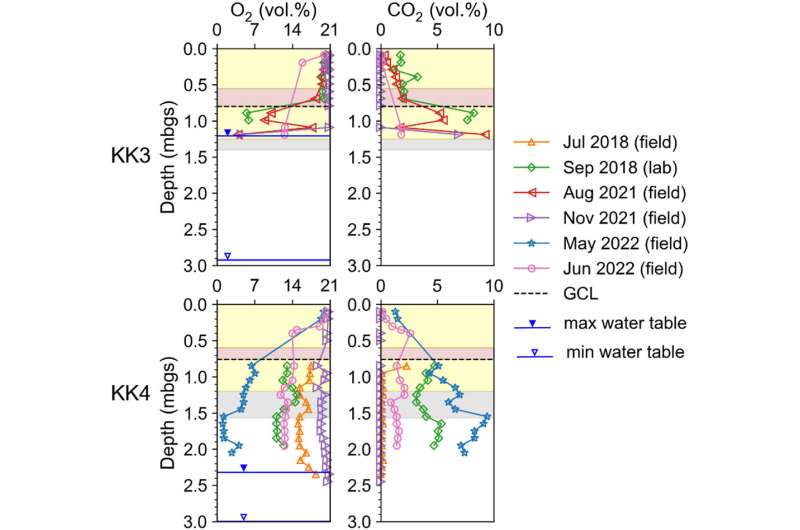This article has been reviewed according to Science X's editorial process and policies. Editors have highlighted the following attributes while ensuring the content's credibility:
fact-checked
trusted source
proofread
Method for containing toxins from mine waste could protect drinking water, prevent cancer

Imagine an abandoned mine site, surrounded by dead trees and dotted with dark, red ponds with no signs of aquatic life. This is the result of mine waste left in the environment that gets weathered by water and air. With exposure to the elements over time, the waste produces toxic substances such as arsenic and lead.
"It is a major environmental problem facing the mining industry in Canada and worldwide," said Aria Zhang, who studied a method for covering mine tailings as part of her Master's degree at the University of Waterloo. "Once these toxins are released, it's difficult to control. It pollutes the soil and seeps into lakes and groundwater. It can threaten people's drinking water supply, agricultural production, and the ecosystem."
Under the supervision of professors David Blowes and Carol Ptacek, and hydrogeochemist Jeff Bain, Zhang assessed the effectiveness of a cover of layers of soil, sand, and gravel placed over mine waste near Timmins, Ontario, in 2008.
The cover was intended to inhibit the chemical reaction that produces toxins and prevent them from leaching into the environment. However, there were concerns within the remediation industry about how effective covers would be in containing toxins from the waste—which was deposited on this site between 1968 and 1972.
"At old mine sites, metals like lead, arsenic, and copper have precipitated into unstable solids," said Zhang. "It's similar to limescale buildup in a kettle if there is hard water. They are sensitive to chemical changes, which means they could dissolve again under a cover and potentially get released into the environment."
Using experimental techniques at the Canadian Light Source at the University of Saskatchewan and the Advanced Photon Source at Argonne National Laboratory in Illinois, Zhang and colleagues determined the remediation approach had been successful. They found that the cover did not destabilize toxic minerals at the site and was preventing more toxins from developing. Their findings were recently published in Applied Geochemistry.
"This cover is already applied at many mine sites, but because of this uncertainty about the chemistry there were some concerns," said Zhang. "Now, we know better."
The results provide useful information for decision-makers and engineers as they plan future mine remediation efforts. "Our findings can be applied today. A lot of mining is happening and a lot of old mines are being remediated. As professionals design covers and select remediation methods to use, they can take our results into consideration."
Zhang hopes their findings will benefit the environment and human health.
"Remediation is crucial in controlling the toxic metals in the mine waste from being released into the environment so that it doesn't threaten the drinking water supply or cause health concerns. Those toxic metals are known to kill fish and cause cancer, so it's very important to do something about it and to have confidence in the efficacy of your remediation method," said Zhang.
More information: Aria Zhang et al, Geochemistry and mineralogy of legacy tailings under a composite cover, Applied Geochemistry (2023). DOI: 10.1016/j.apgeochem.2023.105819
Provided by Canadian Light Source





















